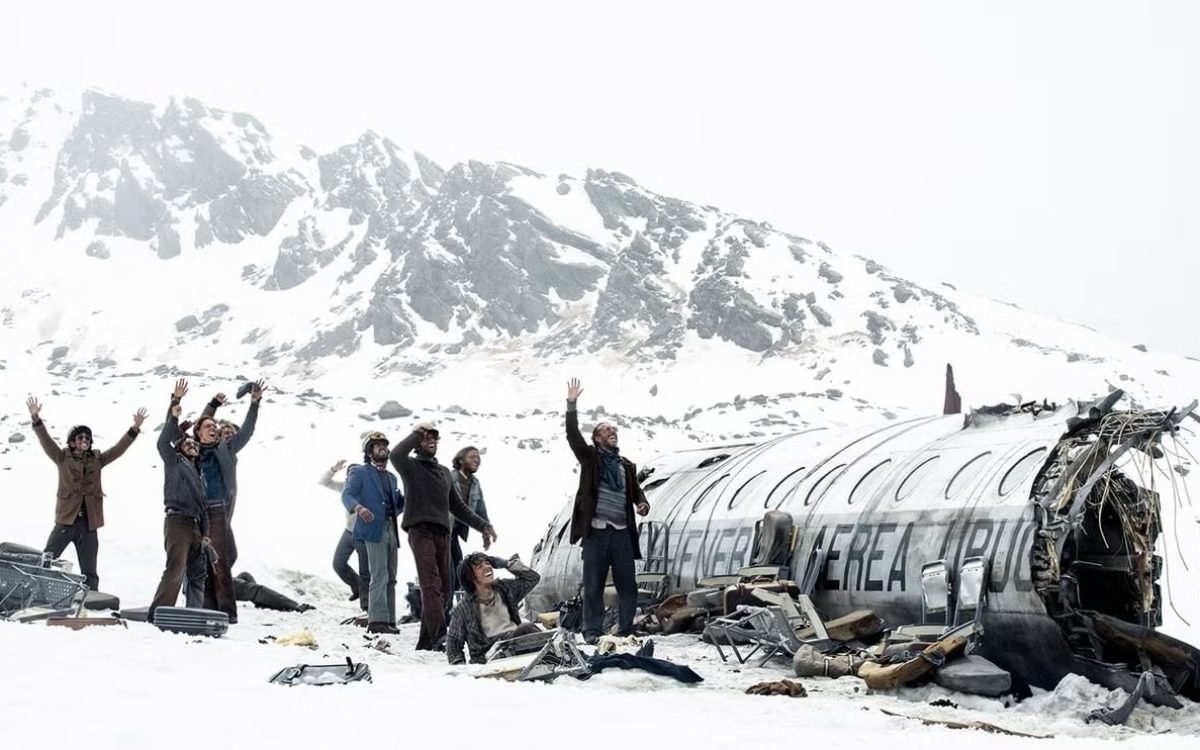Survival Drama Unfolds in “Society of the Snow
Imagine a movie where most characters face a tough situation, and you know many won’t make it. That’s the scene in “Society of the Snow,” directed by J.A. Bayona, telling a true story about a plane crash in the Andes in 1972. The twist? The survivors have to do something extreme to stay alive – eating the bodies of those who didn’t make it. It might remind you of another movie, “Alive.”
Now, as we meet the main characters, mostly from a rugby team in Montevideo, we wonder who will survive. It’s like guessing who the hero is in a scary movie. Is the camera focusing on someone because they’ll be the main character, or is it just trying to make us feel sadder about their tough situation?
But this movie is not just about the crash; it’s about people and their relationships falling apart. In the beginning, it’s like trying to figure out who will make it, similar to a scary movie. The film makes us think about big things like what’s right and wrong, how to survive, and how life can be so unpredictable. All of this happens against the backdrop of the challenging Andes mountains. Bayona, the director, does a great job making us feel the emotions of this tough situation, pulling us deep into this incredible story.
“Society of the Snow” kicks off with a relatively small group – just 40 passengers and five crew members on the ill-fated plane. However, the challenge arises when trying to spotlight each individual in a feature film, given the limited time. Inevitably, a significant number, especially the 17 who perished either in the crash or the brutal first night, become mere casualties. Bayona pays respects to each life lost by displaying on-screen text with the name and age of the deceased, yet, over time, this becomes a repetitive and almost ritualistic act: another day, another life cut short. While the film delves into a renowned true story, one that has garnered Oscar attention and even been considered a potential dark-horse for Best Picture, it prompts contemplation – how distinct is it from the suspense-driven plots of a “Final Destination” sequel, where the narrative revolves around the anticipation of the next gruesome demise?
The cinematic landscape of “Society of the Snow” raises questions about storytelling choices when faced with a large ensemble cast. In its attempt to honor each life lost, the film inadvertently falls into a pattern of delivering names and ages like a somber routine. The weight of the tragedy is acknowledged, but the relentless procession of deaths becomes a rhythmic backdrop. It prompts reflection on the fine line between portraying real-life events with sensitivity and inadvertently transforming them into a macabre spectacle. As the storyline unfolds, we find ourselves comparing this acclaimed true story to the scripted suspense of a horror sequel, emphasizing the blurred boundaries between reality and cinematic dramatization.
Despite the accolades and Oscar buzz, “Society of the Snow” invites viewers to contemplate the nature of storytelling in recounting tragic events. The film’s stark portrayal of life and death raises thought-provoking parallels with fictional narratives, challenging us to consider the impact of cinematic choices on our perception of reality. In the end, the distinction between a renowned true story and a fictional horror sequel may not be as clear-cut as one would expect.
Bayona and his co-screenwriters, including Bernat Vilaplana, Jaime Marques, and Nicolás Casariego, seem aware of the risk of reducing the deceased to mere background characters. They base the movie on Pablo Vierci’s nonfiction book, ensuring it doesn’t become a portrayal of the dead as if they were just NPCs (non-player characters). The narrative focuses on survivors Agustín Pardella’s Nando Parrado and Matías Recalt’s Roberto Canessa, played by Ethan Hawke and Josh Hamilton in the English version. An interesting twist unfolds as the film centralizes one passenger who didn’t make it, Enzo Vogrincic Roldán’s Numa Turcatti. In a clever move, it’s revealed that his voice has been narrating the story from the start, persisting even after his passing, occurring around 30 minutes before the credits roll.
This narrative strategy by Bayona and the co-screenwriters adds depth to “Society of the Snow.” By highlighting the voices and stories of both survivors and those who didn’t make it, the film crafts a unique perspective on the tragic events. The decision to let Numa Turcatti’s voice carry on posthumously introduces an intriguing layer, underscoring the enduring impact of the departed within the storytelling, a poignant reminder that their voices linger long after their physical presence fades away.









